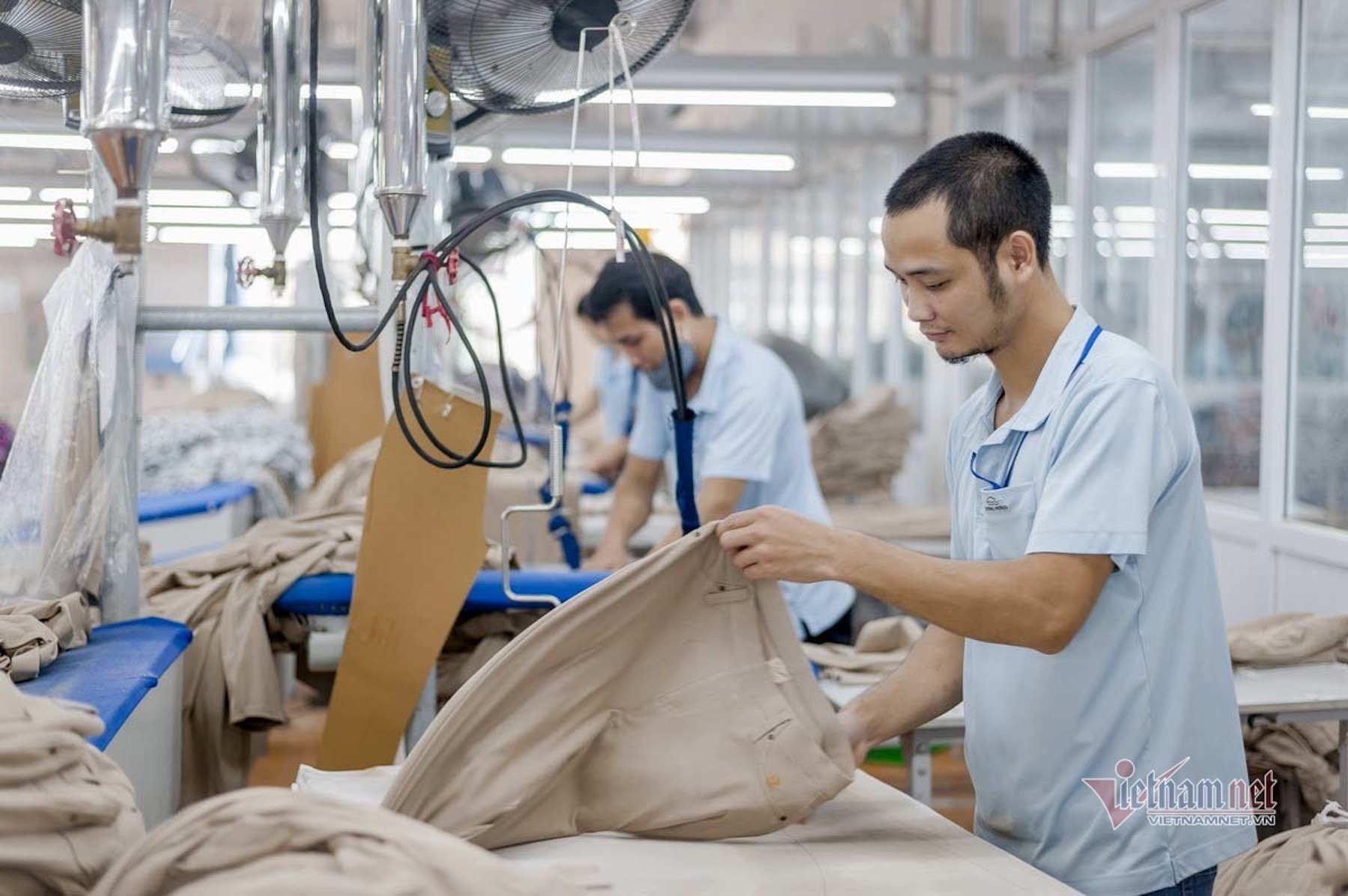
In addition to being primarily focused on contract manufacturing with limited investment in modern machinery, Vietnam’s textile and footwear sectors are still dependent on more than 60% imported raw materials. As a result, supply chain disruptions significantly impact businesses.
To advance the fashion industry, it is essential to establish industrial zones and clusters developed through integrated supply chains, particularly through the creation of R&D centers, fashion design hubs, and performance spaces.
Ongoing bottlenecks
In the early 1990s, Vietnam’s fashion industry - mainly textiles and footwear - was largely engaged in contract manufacturing for Eastern European countries. Later, Vietnamese enterprises had to find new markets and gradually shifted exports to Western Europe.
By the end of 2000, textile and footwear exports reached over $3.2 billion, accounting for around 35% of Vietnam’s total export value, with textiles contributing $1.8 billion and footwear over $1.4 billion. This marked a turning point, transforming fashion into one of Vietnam’s top five export sectors.
Today, textiles and footwear remain core pillars of the economy, with 16,348 businesses employing nearly 5 million workers - 22% of the industrial workforce. These sectors play a significant role in job creation, labor market development, and social welfare.
In 2024, their combined export value surpassed $71 billion (textiles at over $44 billion and footwear over $27 billion), with an average annual growth of 10%, making up nearly 16% of Vietnam’s total exports. The next target is to exceed the $100 billion mark in the coming years.
Over the past 40 years, the fashion industry has grown into a major economic sector. Nguyen Chi Trung, Chairman of Gia Dinh Group, noted that despite this progress, the industry still faces numerous constraints that hinder its ability to meet domestic and international demands.
With rapidly evolving fashion trends and increasingly stringent requirements from global brands and partners, businesses must modernize equipment, secure local sources for raw materials, and reduce reliance on imports to fully capitalize on free trade agreements Vietnam has signed.
"Only by doing this can we increase product value, improve competitiveness, and mitigate the adverse impacts of policy changes from major markets," emphasized Nguyen Chi Trung.
Pham Quang Hai, Sales Director of Bao Minh Textile Company, echoed this sentiment. Although Vietnam’s fashion industry consistently accounts for over 10% of national export turnover and ranks among the top three textile and footwear exporters globally, the added value remains low.
Most businesses still depend on contract manufacturing, foreign supply chains, and client-designated materials, which limits creativity and product development within domestic factories. Furthermore, the cost advantage of low labor will soon fade.
To address this, it is crucial to resolve the bottleneck in raw material supply, enabling enterprises to take greater control of production while enhancing collaboration and innovation. Local and national governments must implement supportive mechanisms and policies to attract investment in fiber production, textile processing, dyeing, and product finishing, giving businesses the confidence to invest and improve efficiency.
Boosting competitiveness
On December 29, 2022, the Prime Minister issued Decision No. 1643/QD-TTg approving the development strategy for Vietnam’s textile and footwear industries through 2030 with a vision to 2035.
The strategy emphasizes sustainable and efficient growth through a circular economy model, the completion of domestic value chains, active participation in global supply chains, and the development of regionally and globally recognized brands.
To implement this strategy, the Vietnam Textile and Apparel Association (VITAS) and the Vietnam Leather, Footwear and Handbag Association (LEFASO) have proposed building a supply chain R&D center for the fashion industry during the 2026-2030 period.
The center would aim to connect and develop supply chains, showcase and test new materials and technologies. However, the project remains in the planning stage, and there is still a significant gap between proposal and reality.
LEFASO Chairman Nguyen Duc Thuan stressed that reaching the $100 billion export goal will require the industry to achieve 70-80% local sourcing of raw materials within the next five years. This would reduce intermediaries, lower costs, increase product value, and strengthen competitiveness.
He also recommended that the government implement breakthrough policies to establish dedicated centers for raw material production, research labs, and display hubs.
According to VITAS Vice President Than Duc Viet, one of the key elements in the Prime Minister’s Decision No. 1643 is the development of supporting industries and raw material supply centers for textiles and footwear. Yet, more than two years later, implementation progress remains slow.
Tran Viet Hoa, Director of the Department of Industry under the Ministry of Industry and Trade, emphasized the urgent need to build a dedicated supply chain research and development center for Vietnam’s fashion industry. Such a center would facilitate technology transfer and act as a bridge between businesses and global markets.
Nhan Dan